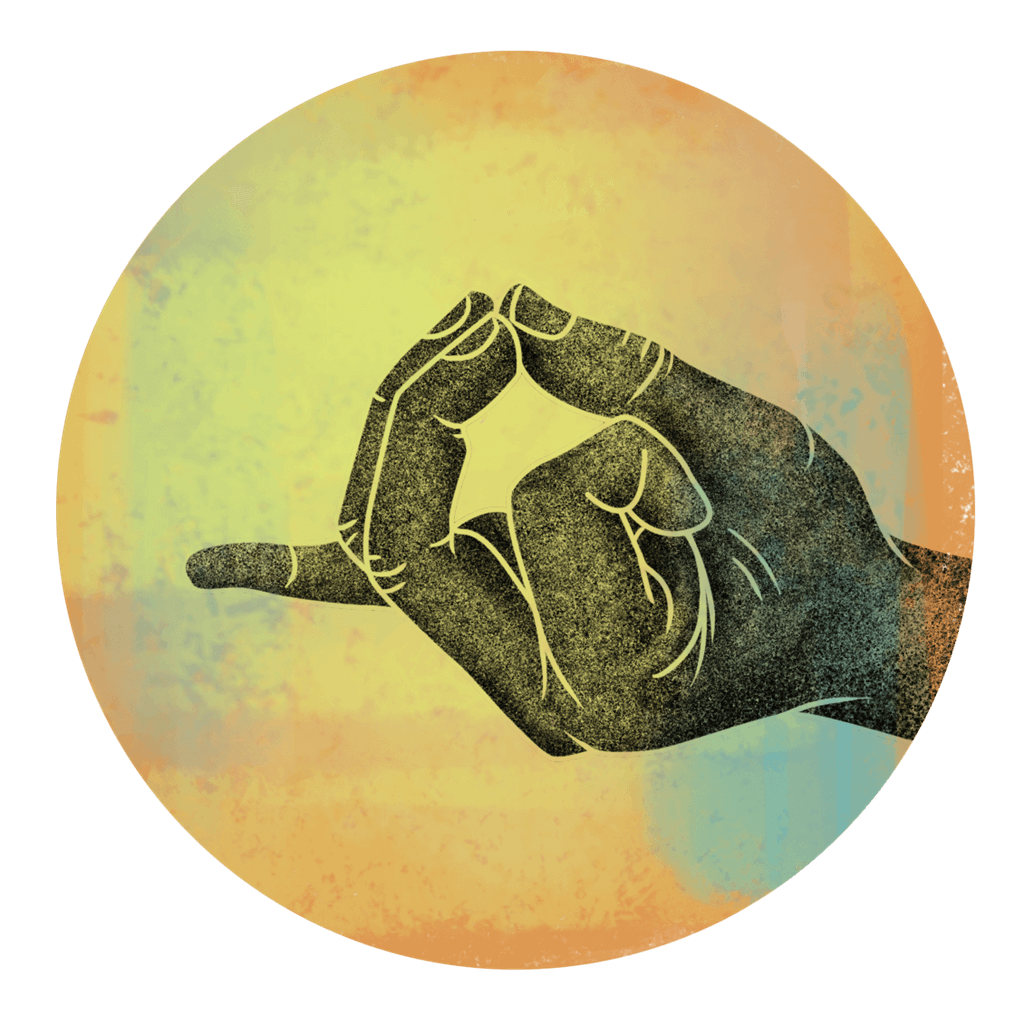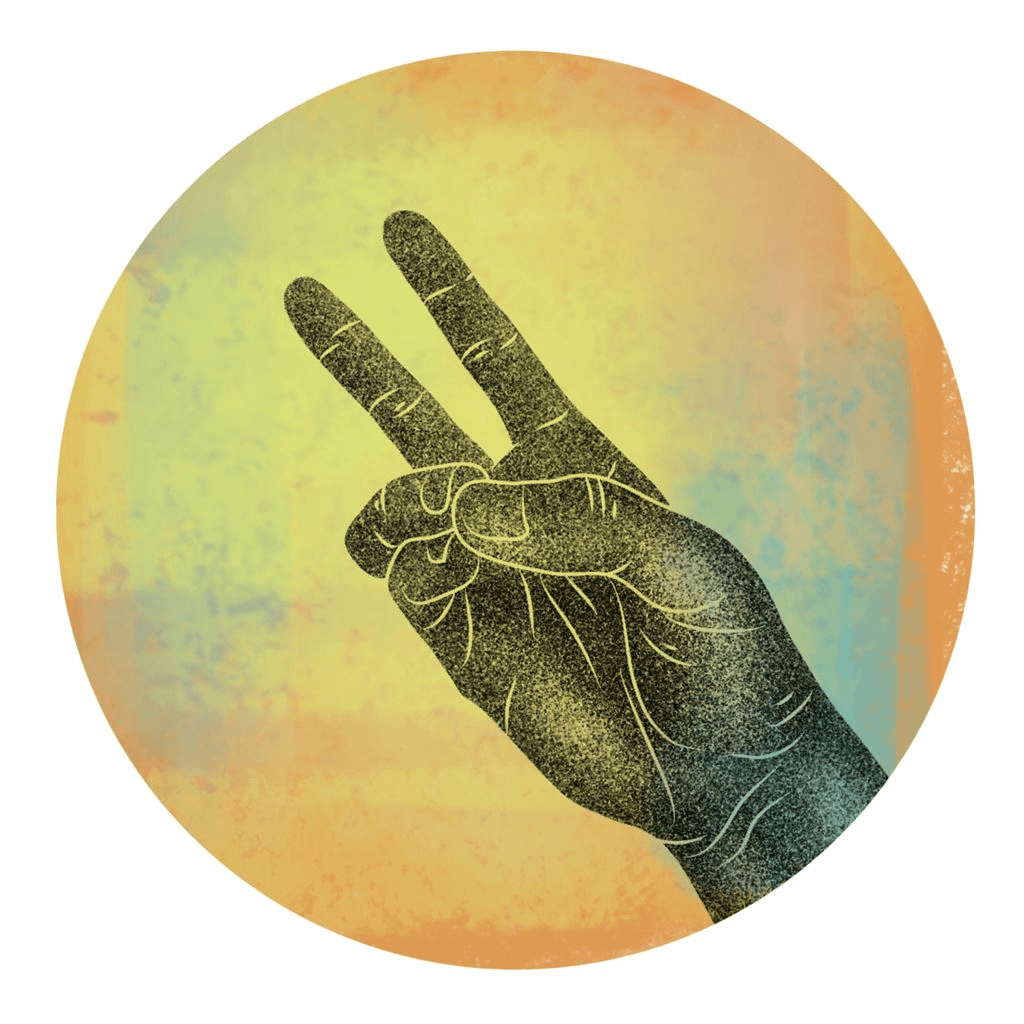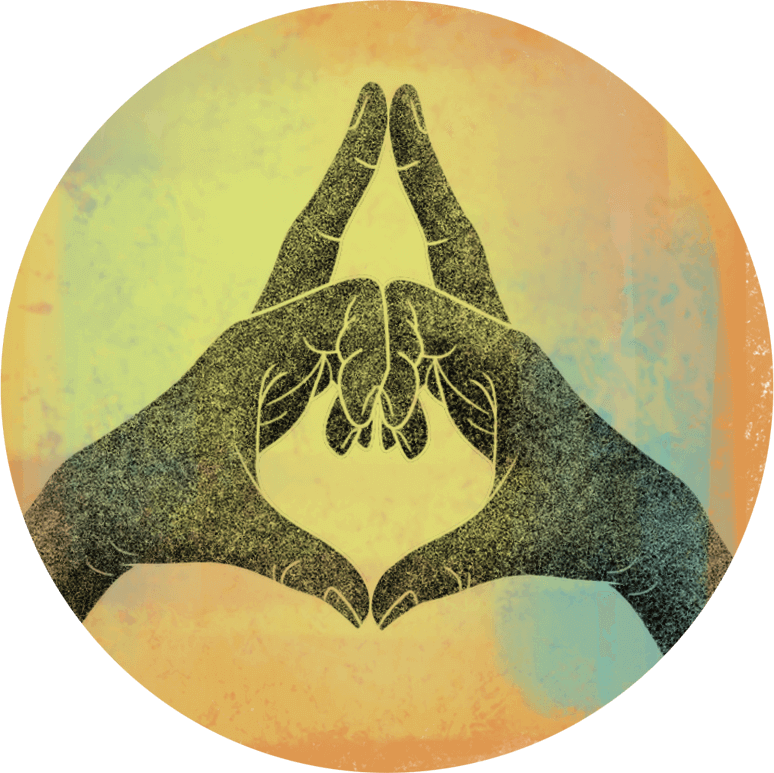Mudras are ancient gestures used in yoga that are said to alter the flow of energy in your body.
By intentionally channeling your energy, you are allowing stuck energy to travel throughout your nadis (energy pathways) more freely. (Learn more in The Power of Mudras.)
You are also creating contact with the various nerve endings throughout your hands whenever you use a mudra, which undoubtedly impacts the way energy moves throughout your body on a measurable scientific level.
Using mudras throughout your day or when sitting in meditation can positively affect your overall mental health by assisting energy flow, balancing the body, and calming the mind.
In this article, I have selected five specific mudras that can be practiced to support mental health and clarity: Apan Vayu Mudra, Gyan Mudra, Prana Mudra, Anjali Mudra, and Kalesvara Mudra.
1. Apan Vayu Mudra
To form this mudra, press the pad of your index finger to the base of your thumb. The pads of your middle and ring finger come to join the tip of your thumb while your pinky extends outward.

This mudra is believed to regulate your hormones and has been said to work very well for people who experience anxiety, impulsivity, and hyper-vigilance.
It is known to be a very powerful mudra in India and has been historically believed to prevent and treat cardiac problems like heart attacks. It is advised to practice this mudra for 30 to 45 minutess per day when used for this purpose. (Learn more in Connect With Yourself: 5 Mudras for the Heart.)
The risk for cardiac disease is higher for people who experience severe anxiety as it tends to increase the heart rate and create stress on the heart, which makes this mudra a great one to practice to support overall health and foster the mind-body connection.
2. Gyan Mudra
This mudra is formed by touching the pads of the thumb and index finger, and relaxing the remaining fingers outward. It is the mudra you see most often when meditation is depicted or imitated in the media.

It has been said to facilitate mental alertness, memory, enhance mood, and connect you to Source and your Higher Self.
It is also said to eradicate the dull stagnant energy from the body. Some people report a strong sensation of energy buzzing and moving on the pads of the thumb and index finger, and this could be related to an energetic elimination of stuck energy.
3. Prana Mudra
To form this mudra, extend your index and middle finger outward, while touching the pads of your ring and pinky fingers to your thumb pad.

It is believed to improve your eye health and assist with combating fatigue by stimulating the dormant energy or prana within your body. It is called the prana mudra for this reason.
This mudra could be helpful for someone, who is experiencing hormonal imbalances that cause lethargy or symptoms of depression, to create more energy and liveliness. (Learn more in Is Your Chi Blocked?)
4. Anjali Mudra
Anjali mudra is commonly known as prayer mudra. In Sanskrit, “anjali” refers to “salutation,” or “divine offering.” The hands are brought into a prayer position and the palms are joined at the center of the chest, connecting them to the anahata (heart) chakra. (Learn more in Namaste and Namaskar: Greeting the Divine.)

Personally, I use this mudra a lot throughout my day when thanking people for meals, sending love and blessings across far distances, when I am connecting with someone and leading from my heart in doing so, and when I am reflecting on my own internal processes.
For me, this mudra helps me to connect with my sense of appreciation and gratitude, which has tremendous positive impacts on mental health. It is also said to calm the mind, relieve stress, and improve focus during meditation.
5. Kalesvara Mudra
This mudra is formed by touching the pads of the left and right middle fingers on each hand, and bending the left and right index fingers inward to touch knuckles. The thumb pads also touch with the thumbs extended downward creating a point. The remaining fingers are either folded in as well or kept outward.

It is one of my favorite mudras because it looks like a heart. It is said to calm the mind by: reducing the quantity of thoughts, assisting you in reflection, releasing addictive habit patterns of the mind, reducing anxiety and agitation, enhancing memory, and creating space to set intentions. (Learn more in How Meditation can Help Soothe Your Stress and Anxiety.)
It comes from the Sanskrit words “kala” and “esvar” meaning “time” and “God,” and is, therefore, a prayer to the God of time. This mudra would be great to use if you find yourself feeling anxious or agitated in regards to a perceived time restraint.
These five mudras have their own specific characteristics that make them effective tools for supporting mental health.
They can be used during a formal meditation sitting, throughout your day when you need a moment to create intentional stillness, or if you are feeling like you are stuck emotionally or energetically.
If you choose to use these five mudras, or if any other of the countless mudras work better for you, you are facilitating energy flow throughout your body and fostering stillness, ease, and relaxation, which will always in turn supports your mental health. (Learn more in 3 Ways to Stop Anxiety With Yoga.)
During These Times of Stress and Uncertainty Your Doshas May Be Unbalanced.
To help you bring attention to your doshas and to identify what your predominant dosha is, we created the following quiz.
Try not to stress over every question, but simply answer based off your intuition. After all, you know yourself better than anyone else.